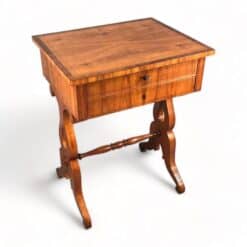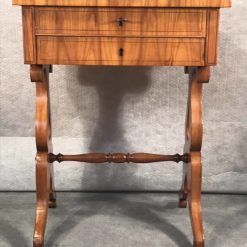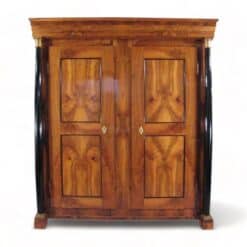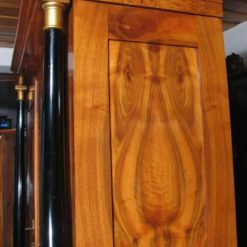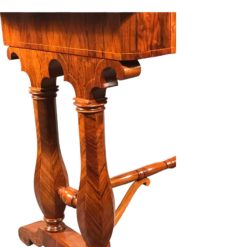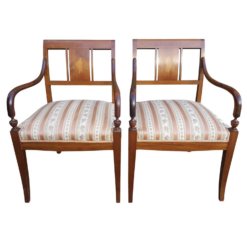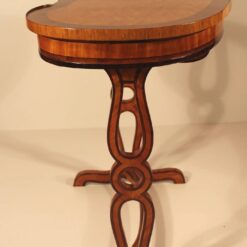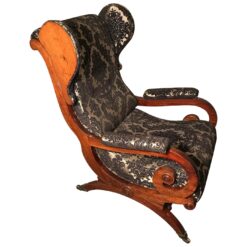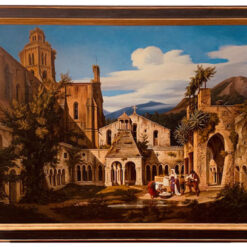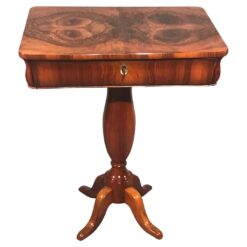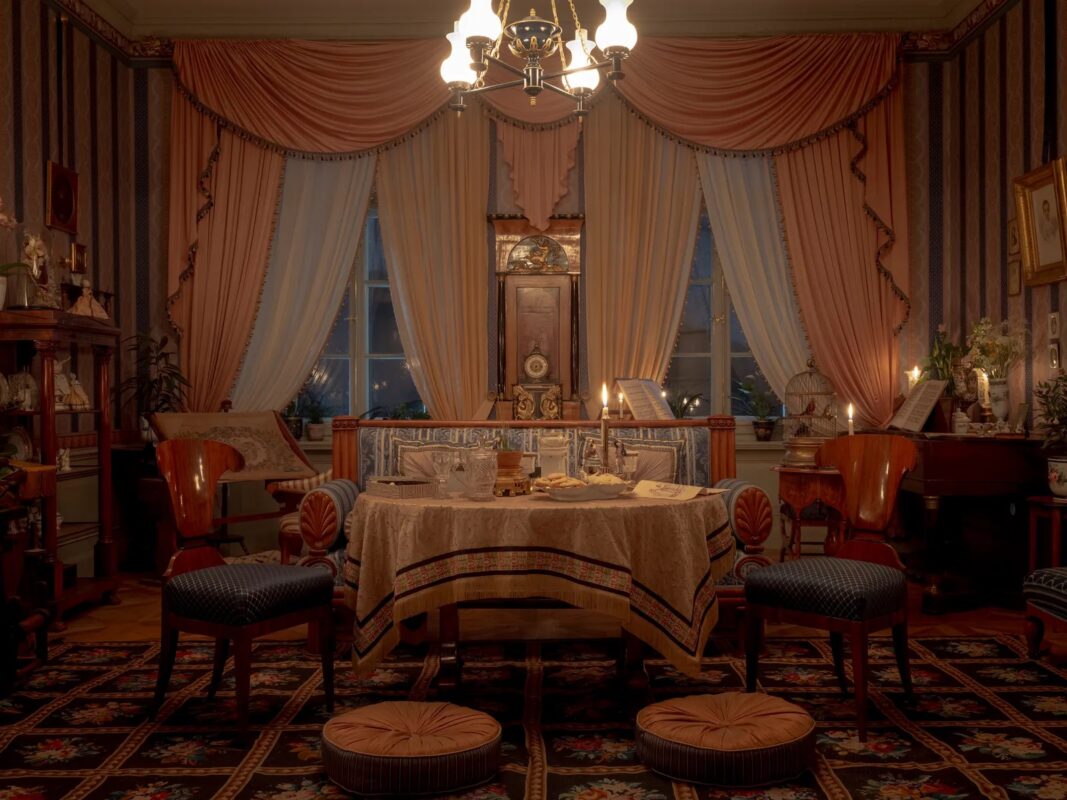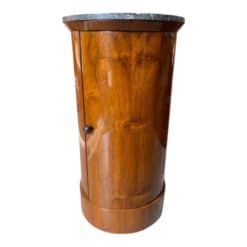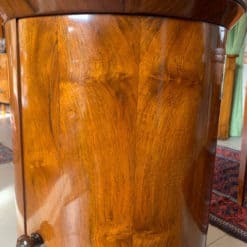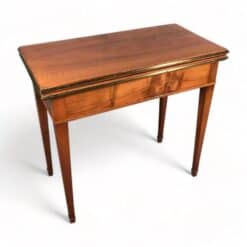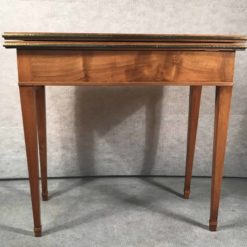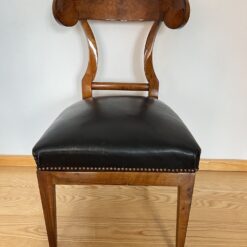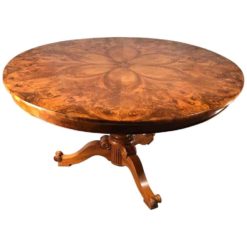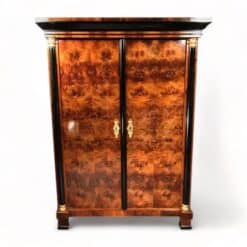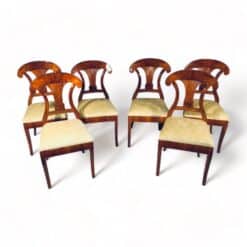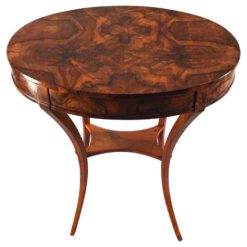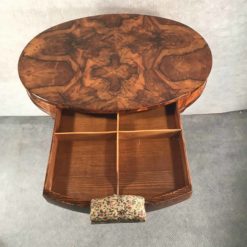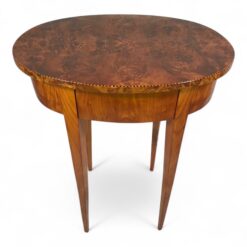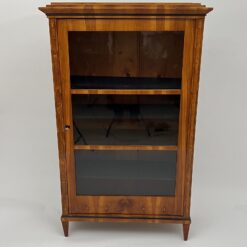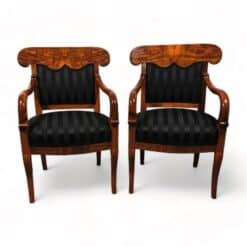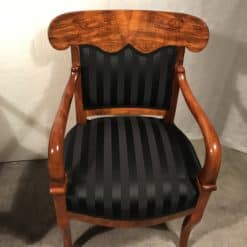Best Sellers
Biedermeier, Furniture, Styylish History
Antique Furniture in Film and Television: How Shapes Define Cinematic Elegance
Antique furniture in film and television is more than decoration. It’s a silent narrator, revealing character, mood, and historical context. Among the most compelling styles on screen are Biedermeier and Empire furniture — celebrated for their elegant proportions, polished veneers, and timeless balance. From the candlelit salons of The Empress to the eerie domestic interiors of Robert Eggers’s new Nosferatu (2024), these antique pieces continue to influence cinematic design.
The Enduring Allure of Biedermeier and Empire
The Biedermeier period (1815–1848) marked a cultural shift in Central Europe from aristocratic grandeur to domestic comfort. Furniture from this era — often made from cherry or walnut, with clean lines, subtle inlays, and French-polished surfaces — exemplifies restrained luxury and refined craftsmanship.
Empire furniture, slightly earlier (c. 1800–1820), carries neoclassical grandeur: gilded accents, curved legs, and sculptural silhouettes. Both styles communicate taste, order, and sophistication, making them ideal tools for visual storytelling in period dramas and modern reinterpretations.
Biedermeier in Contemporary Cinema — The Empress and Vienna Blood
Netflix’s The Empress (2022), a historical drama television series based on the life of Empress Elisabeth of Austria, affectionately know as “Sissi”, beautifully captures the spirit of Biedermeier interiors. Polished cherry tables, gracefully curved chairs, and French-polished surfaces shimmer in soft candlelight. These luminous rooms reflect the tension between imperial protocol and personal freedom, with each piece of furniture expressing both restraint and intimacy.
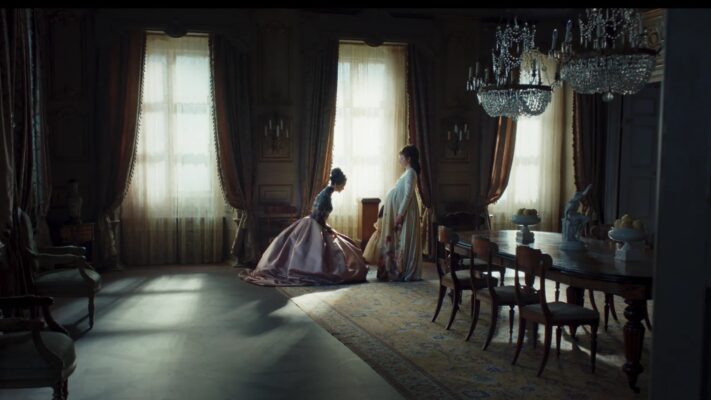
Similarly, Vienna Blood (BBC/PBS) authentically recreates early 1900s Vienna by utilizing numerous historic, ornate filming locations that capture the grandeur of the Habsburg era and the contrasting styles of the period, from Rococo to Art Nouveau.
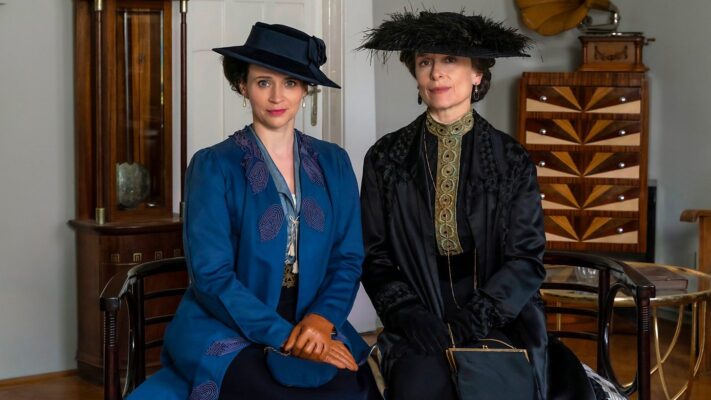
Even series like Bridgerton and Queen Charlotte, while British, draw inspiration from the clean geometry and subtle ornamentation found in Empire furniture, creating spaces that are historically suggestive yet visually appealing to modern audiences.
The Haunting Effect — Robert Eggers’s Nosferatu (2024)
Robert Eggers’s Nosferatu – a recent remake of a German silent film adaptation of Bram Stoker’s classic 19th century vampire novel “Dracula”- revisits German Expressionism with remarkable historical depth. Production designer Craig Lathrop drew inspiration from early 19th-century Central European interiors, referencing Biedermeier furniture and atmosphere to define the human world of the story.
The film’s fictional town of Wisburg features tidy homes with polished cherrywood tables, ceramic stoves, and modest yet elegant furnishings — a visual nod to middle-class aspiration and order. As Lathrop described, these rooms appear “like a medieval house fixed up to be Biedermeier, but without the budget” — an aesthetic of yearning rather than wealth.
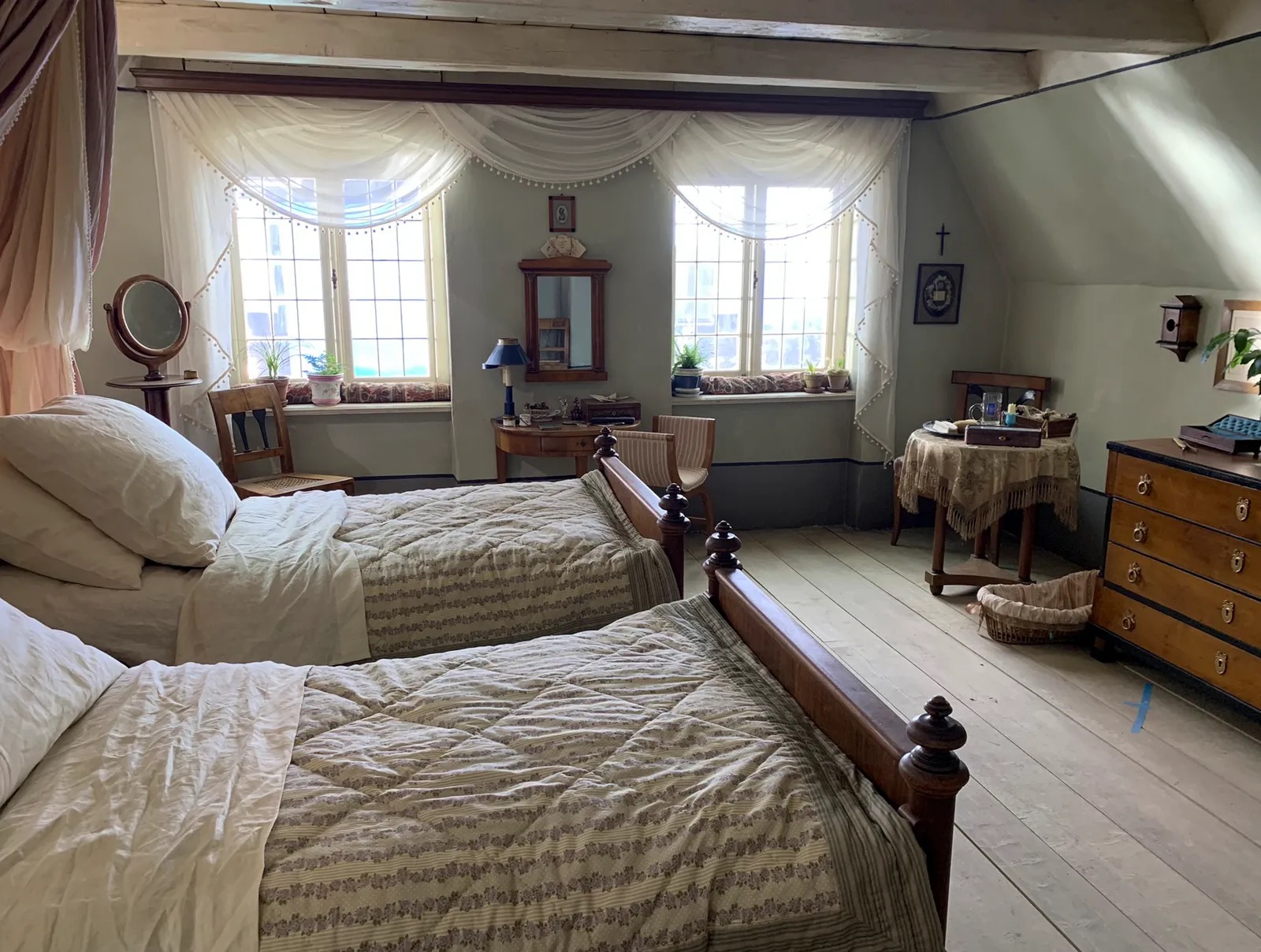
The contrast between these warm domestic spaces and the vampire’s stark, decaying castle forms the film’s visual and emotional core. The Biedermeier interiors, symbols of rational comfort and beauty, become fragile defenses against chaos. In Eggers’s hands, furniture becomes narrative: the glow of a French-polished table reflects both human civilization and its inevitable vulnerability.
Directors and set designers understand that furniture communicates character and mood before a single line is spoken. A Biedermeier writing desk suggests intellect and introspection; a walnut pedestal table conveys civility and stability.
From Antique Furniture in Film and Television to Modern Interior Design
The qualities that make Biedermeier and Empire furniture cinematic — harmony, proportion, and luminous surfaces — are exactly what make them desirable in contemporary interiors. A single antique table or cabinet can anchor a room, bridging centuries with understated elegance.
Designers often mix antique pieces with modern furnishings: a Louis XV-XVI Transition chest combined with contemporary furniture and artwork as seen in the picture below. The result is a conversation between eras, echoing the way filmmakers juxtapose historical authenticity with narrative innovation.
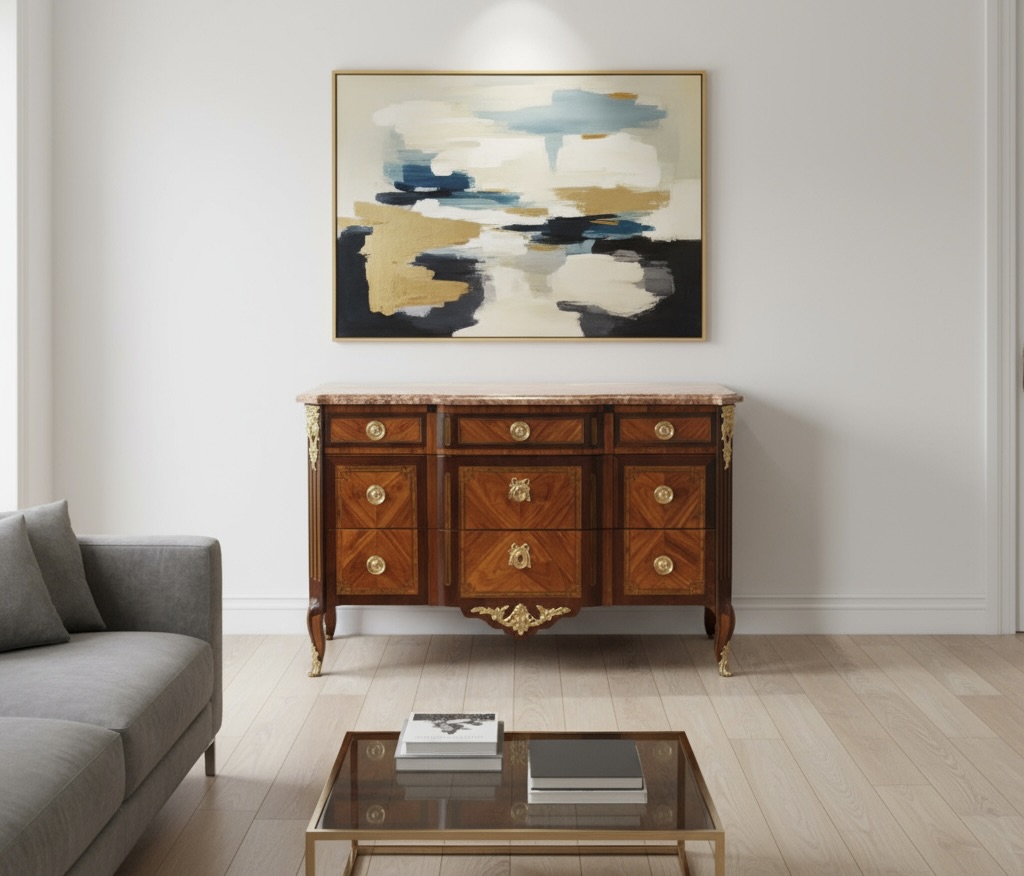
Why These Styles Endure
Antique furniture pieces continue to appear on screen because they tell a story of human aspiration, craftsmanship, and beauty. Their proportions, materials, and detailing resonate with audiences both as historical artifacts and as objects of desire in modern homes.
Whether in the haunting world of Nosferatu or the luminous halls of The Empress, these pieces demonstrate that antique furniture is not static. It interacts with space, light, and emotion, shaping experiences just as a director shapes a narrative.
Bringing Cinematic Elegance Home
Styylish celebrates the same connection between design, history, and storytelling. Our curated collection of authentic Viennese Biedermeier, Empire or Louis XVI furniture allows collectors and enthusiasts to bring the drama, warmth, and refinement of the screen into their own interiors.
From cherrywood tables with radiant French-polished surfaces to elegant walnut commodes, each piece carries the history, craftsmanship, and cinematic elegance that inspired generations of filmmakers.

